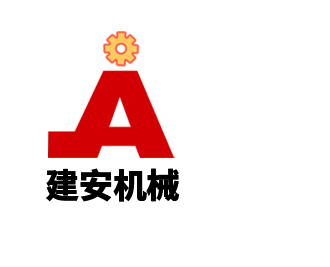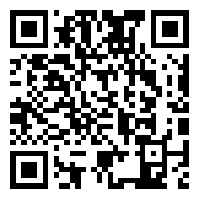Mechanical Drawing of Jigger - Jianan Machinery Factory
Mechanical drawing is the discipline of using drawings to accurately represent the structural shape, dimensions, operating principles and technical requirements of machinery. Drawing consists of graphics, symbols, text and figures, etc. It is a technical document that expresses the design intention and manufacturing requirements as well as exchanges experience, and is often called the language of the engineering world.
The origin of using drawings to record things is very early, such as the Chinese Song Dynasty Su Song and Zhao Gonglian's "New Instrumental Laws" has been accompanied by astronomical chimes in the drawings of the instrument, Song Yingxing of the Ming Dynasty, "Tiangong Kaiwu" also has a large number of mechanical drawings, but it is not yet rigorous. 1799, the French scholar Montjay published the "Drawing Geometry" work, since then the graphics of the mechanical drawings began to be drawn in strict accordance with the theory of the projection of the Drawing Geometry.
In order to make people have a consistent understanding of the format, text, graphic lines, graphic simplification and the meaning of symbols involved in the drawings, a unified specification was gradually formulated and developed into a mechanical drawing standard. Each country generally has its own national standards, and internationally there are standards set by the International Organisation for Standardisation. China's national standard for mechanical drawing was formulated in 1959 and later revised twice in 1974 and 1984.
The items stipulated in the mechanical drawing standards are: drawing size and format, scale, font and drawing lines. Multifunctional mechanical arm in the drawing format and format provides for the size of the standard format of the drawing and the corresponding size of the drawing frame in the drawing. Proportion refers to the length of the dimensions in the drawing and the proportion of the actual size of the machine, in addition to allowing the drawing of 1:1 ratio, only allowed to use the standard specified in the reduced proportion and enlarged proportion of the drawing.
In China, it is stipulated that Chinese characters shall be written in long imitation Song font, and letters and numbers shall be written in the prescribed structure. There are eight specifications for drawing lines, such as thick solid lines for drawing visible contour lines, dotted lines for drawing invisible contour lines, fine dotted lines for drawing axes and symmetry centre lines, and fine solid lines for drawing dimension lines and section lines.
Mechanical drawings are mainly parts drawings and assembly drawings, in addition to layout drawings, schematic drawings and axial drawings.
Parts drawings to express the shape of the parts, size and manufacturing and inspection of parts of the technical requirements; assembly diagrams to express the mechanical parts and components belonging to the assembly relationship and working principle; layout diagrams to express the location of machinery and equipment in the plant; schematic diagrams to express the working principle of machinery, such as expressing the principle of mechanical transmission mechanism movement diagrams, expression of the pipeline of the liquid or gas pipeline schematic diagrams, and so on. Schematic diagram of the mechanical components are expressed in symbols. Axis system drawing is a three-dimensional diagram, intuitive, is a commonly used auxiliary drawings.
Expressing the shape of the mechanical structure of the graphics, commonly used view, sectional view and sectional drawings.
The view is according to the orthographic projection method, that is, the machine to the projection surface of the figure. According to the direction of projection and the position of the corresponding projection surface, the view is divided into the main view, top view and left view. The view is mainly used to express the external shape of the machine. Invisible contour lines in the drawing are indicated by dotted lines. When a part is projected onto a projection plane, there are two relative positions between the observer, the part and the projection plane. When the part is located between the projection surface and the observer, it is called the projection method. When the projection plane is between the part and the observer it is called the third angle projection. Both projection methods can express the shape of the machine equally well. The Chinese national standard specifies that the angular projection method is used.
The sectional view is a hypothetical cutaway of the part of the machine, the part between the observer and the cutaway is removed, and the rest of the part is projected to the projection plane and the figure is obtained. The sectional view is mainly used to express the internal structure of the machine. The sectional view is used to express the internal structure of a part, while the sectional view is used to show only the cut-off surface of a part. The sectional drawing is often used to express the shape of the section of the rod structure.
For the drawing of some of the more cumbersome structure, in order to improve the efficiency of the drawing allows it to simplify the drawing, the simplified drawing method is called simplified drawing method. Mechanical drawing standards for which the threads, gears, splines and springs and other structures or parts of the legal system of drawing standards.
Drawing is in accordance with the structural shape and size of the machine parts in accordance with the appropriate proportion of the drawing. The size of the machine parts in the drawing with the size of the line, the size of the boundary and the arrow to indicate the scope of measurement, with the number of its size. In mechanical drawings, the unit of numbers is specified in millimetres, but it is not necessary to specify them. Diameter, radius, taper, slope and arc length and other dimensions, respectively, before the number of symbols to explain.
Manufacture of machine parts, must be marked in accordance with the drawing of the size of the number of processing, is not allowed to measure the size of the graphics directly from the drawings. Requirements in mechanical manufacturing must be achieved in technical conditions such as tolerance and fit, shape and location tolerances, surface roughness, materials and their heat treatment requirements, etc. should be in accordance with the mechanical drawing standards in the drawings with symbols, words and numbers to be marked.
Before the 20th century, drawings are hand-drawn using general drawing tools. 20 century the early 20th century the emergence of mechanical structure of the drawing machine, improve the efficiency of the drawing. 20 century the second half of the emergence of the computer drawing, the need to draw the drawing program into the electronic computer, the computer and then converted to graphic information to the plotter to draw drawings, or conveyed to the computer-controlled automatic machine tools for processing.
Drawings generally need to be depicted as a transparent base map, with a transparent base map printing out blue or ammonia fuming out of the purple map. the mid-20th century the emergence of electrostatic photocopiers, this photocopier can be a direct copy of the original drawings, and can be zoomed in or zoomed out of the map. The use of this new technology can eliminate the tracing process.

Jianan Machinery--Professional Customised Jigger Machine
30 years focus on jigger source manufacturer





